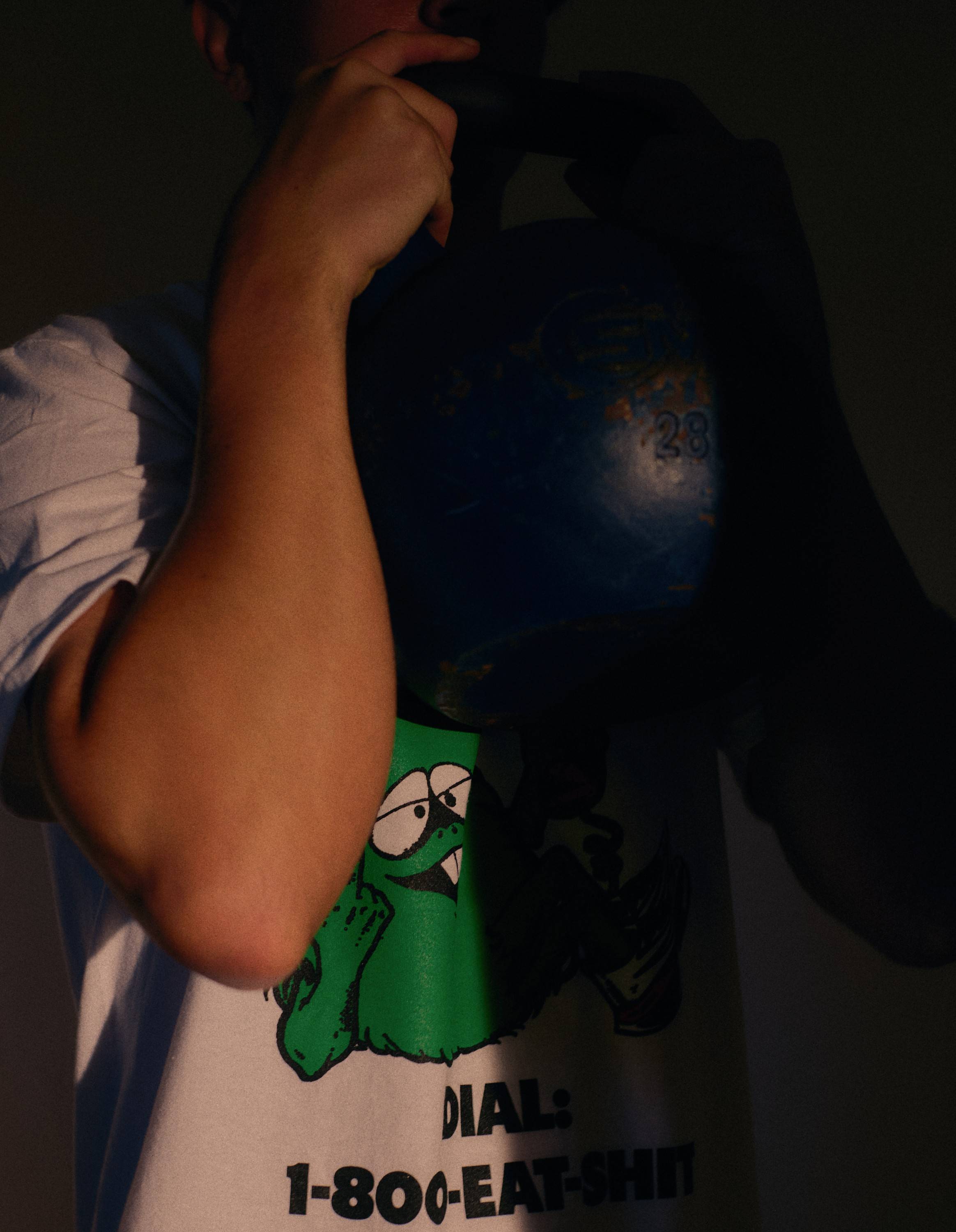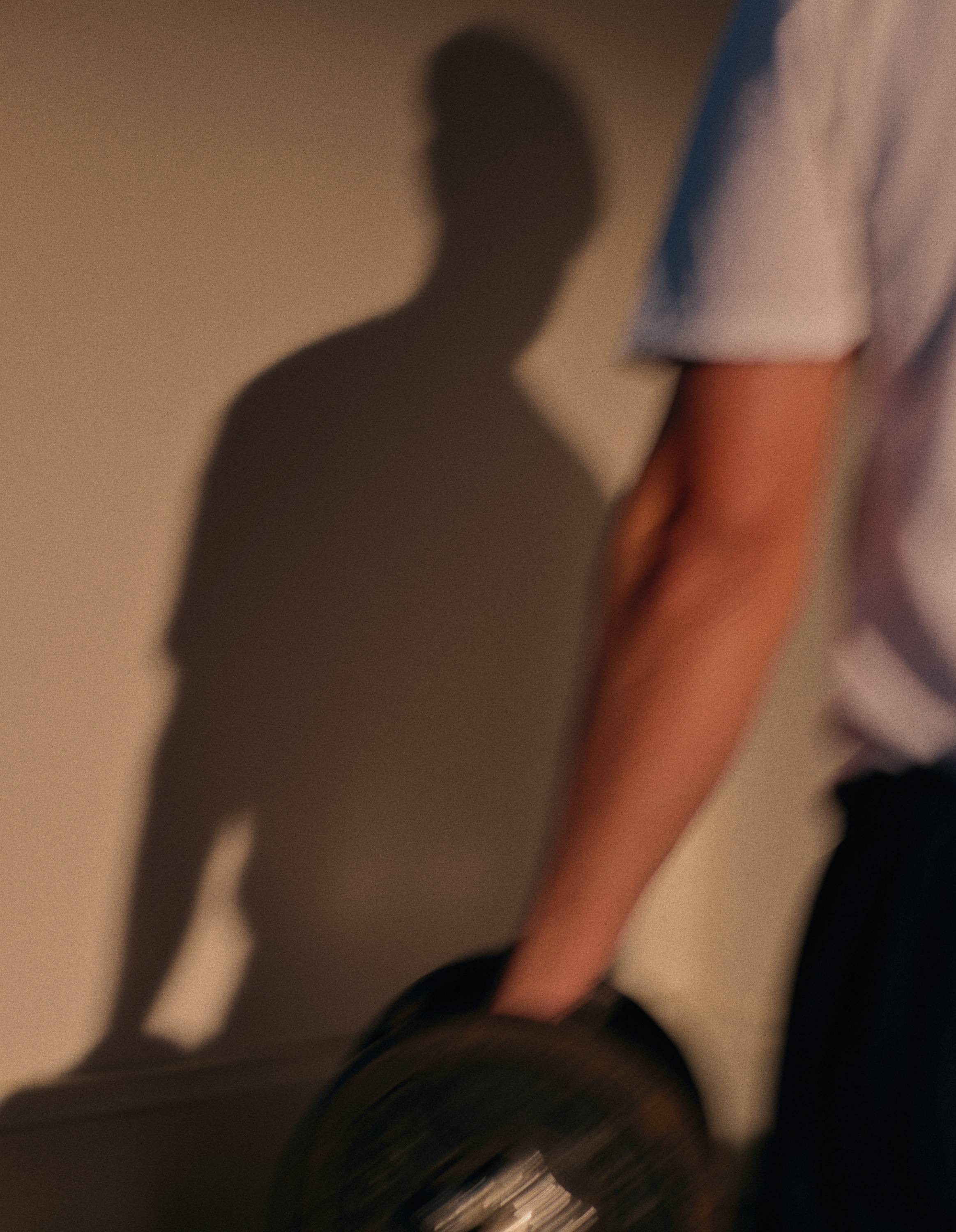
Before starting this month’s H2H, we’d like you to google Zach’s legs. You’ll notice they are absolutely monstrous, like a pair of mighty oaks shooting out of his shorts. Look at those things. He's a dang mutant.
Photography & Video: Ben Murphy
Model: Dylan
He could kick a hole in a Leopard Tank with those big buggers, and that’s one of the main reasons he’s so good at what he does: Zach has super-strong legs. Now look at your legs. Hey, Kermit. What’s up.
You really shouldn’t need a detailed explanation of why leg-strengthening exercises are good for runners, but here it is anyway for our readers who like to chew lead.
Besides making your legs more powerful and efficient, leg-strengthening exercises help guard against injury. A lot of running boo-boos occur where weakness resides in the body, so it’s smart to strengthen your legs. Like you, I used to think that using my legs to run was all the strength training they needed. Bzzzt. Wrong. You gotta do other stuff.
The great thing about leg strengthening exercises (at least the ones we’ve recommended here) is you don’t need to join a gym. You just gotta spring for a couple of kettlebells. Even one kettlebell will do. How heavy should the kettlebell be? Depends on how strong you are. Run your stats through the internet and see what he says.
*Disclaimer: Don’t drop a kettlebell on your foot and try to blame us.

Zach has super-strong legs. Now look at your legs. Hey, Kermit. What’s up.
Calf Raises
Let’s start with Calf Raises because they’re pretty straightforward. With a kettlebell (or dumbbell) in each hand at your sides, or just one weight held with both hands at the chest or with the arms straight down, stand with your legs hip-width apart, keep your back straight, shoulders back, looking straight ahead with the determined gaze of a centurion, and then slowly lift your ankles off the floor as high as you can take them and hold there on the balls of your feet. Squeeze your calves at the top, and then gently lower your ankles again. Three sets of 15 to 20 reps should do the trick.

Elevated Heel Goblet Squat
At the gym, they have this thing called a ‘slant board’ that you use to elevate your heels for Elevated Heel Goblet Squats, but we’re not at the gym, so just grab a couple of encyclopedias or something similar (ideally, you’ve got a couple of largish weight plates floating around). Start by holding your kettlebell to your chest with both hands, like you’re holding a really big goblet. Make sure your shoulders are back and your core is engaged. Next, you wanna carefully place your heels on your ‘slant board.’ How high you elevate your heels will depend on your ankle flexibility, which you’ll discover when you set it up. Now, with your ankles elevated (and closer together than an ordinary squat, which is fine), slowly sink into the squat, pushing your butt back and keeping your trunk upright and your core engaged. Make sure your knees stay over your toes and don’t go splay out, and be sure that your elbows remain pressed to your sides as you hold the kettlebell to your chest. Press back up and repeat. Four sets of 12 to 15 reps. Your quads should be killing you.

Single Leg Reverse Lunge
In a perfect world, you’d have two kettlebells for the Single Leg Reverse Lunge, but you can still do them with only one. This is a unilateral move (uni = one, lateral = side), so it requires balance and improves balance. Areas targeted: quads, glutes, abdominals, abductors, the muscles that hold up your spine, and probably your feet. It’s a good one. Here’s what ya do. Grab a couple of kettlebells and stand tall, shoulders back, feet together. Step back with one leg, but keep your weight on the front foot. Really anchor that foot to the floor. How far you step back will depend on your flexibility and what feels good. Maybe do a dry run without weights to get a feel for it. Once you’ve stepped back, lower your body (straight back, core engaged) until your back knee brushes the floor (don’t rest it on the floor). Most of your weight should be on that front foot. Hold there. Now, rise back up by pushing your front foot into the floor, straightening your legs, and slowly bringing your feet together again, making sure you’re not rounding your back. Reset. Do it on the other side. This movement needs to be very controlled. If you go too quickly, you risk hurting yourself. If you’ve only got one kettlebell, just do reps on one side and then change hands/legs. Hold the kettlebell in your right hand when stepping the left leg back, and then reverse it. Four sets of 12 to 15 reps? That’s a good start, but just see how it feels.

Deadlift
Deadlifts are kinda hard because you have to keep your back straight and not round your shoulders, which is what your body naturally wants to do in this movement. Anyway, correct form for this is super important... I mean, it’s always important, but do your best to get it right with deadlifts. First things first, place your kettlebell between your ankles and have your legs hip-width apart. Bend your knees slightly, keep your back flat, and hinge at the hips to reach down to the kettlebell. Once you’re holding the bar, try to rip the kettlebell in half. This will push your armpits in, your shoulder blades back, and it’ll stop you rolling your shoulders forward or rounding your back. From there, engage your core and your glutes to stand back up. When you reach the top, don’t lean back; just stand tall with a kettlebell resting against your junk. Reset and repeat. I don’t know how many times. You decide. 50.
Make time to do these four exercises each week and we guarantee you’ll turn pro or start a podcast where you get to mention 'modalities' a lot. You’re welcome!











